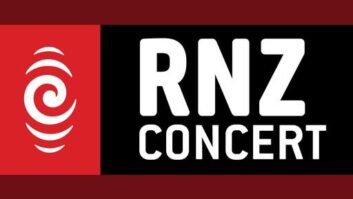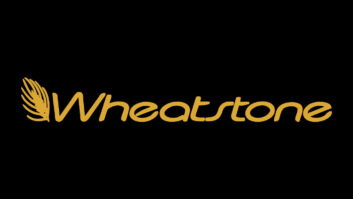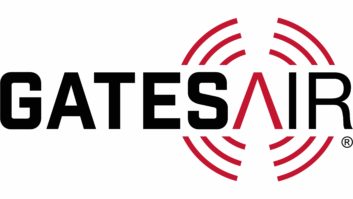
Crystal Ball ©iStockphoto/bülent gültek
What a relief it was to see 2009 and its tumultuous decade pass into history. The past few years and the worst recession since the Depression have been especially painful for all broadcast media. But the turn of the calendar always offers renewed hope, new opportunities and a chance to let the crystal ball reveal the future.
Your masked radio soldier of solder and syntax usually makes predictions this time of year. Let’s not worry about the bad news and the doom-and-gloom stories about radio dying. Let’s concentrate on what can happen if we all keep focused on adapting our business to the trends and currents moving our listeners forward.
By almost all recent surveys and polling accounts, terrestrial radio continues to enjoy very wide appeal and is used daily by about 228 million American consumers. The Internet may be our most vaunted competitor but it’s also a valuable partner that extends our over-the-air services. In 2009, the growth of wired Internet connections in the United States started to level off.
OBAMANOMICS TO THE RESCUE
The new economic order of government bailouts, tight money and declining asset values has changed the way business does business for just about everyone. No longer do big failed companies liquidate and just go out of business. Nor do competitors buy them up at fire-sale prices to save their brands. Lenders are not using their bailout and stimulus money to make loans, so there’s very little buying and selling.
What this means for radio is that companies like Citadel/ABC, Cumulus, Clear Channel, Regent and a few others should just reorganize and let the investors take the hit. CEOs and managers who made bad deals and incurred mountains of debt still keep their jobs. Their stations, already stripped down to the basic necessities of reduced staff and resources, just keep on keepin’ on. As long as radio can generate decent cash flow, we’ll see more debt-ridden groups reorganize.
It also means Sirius XM satellite radio is here to stay. While its subscription growth has slowed to a crawl and they’ve never made money, there is just enough demand and promise to keep the product available as a dashboard option. That’s enough for investors who are willing to keep supporting it.
When wireless IP radio reaches critical mass, Mel’s successors will turn off the satellites and rely on the Internet. The delivery platform is not the key ingredient in their product. Programming content is. When IP does become fully viable, Sirius XM will merely drop “satellite” from its name and turn off the birds, saving a ton of money.
Terrestrial radio will also encounter a similar crossroads, possibly even sooner than satellite, but it’s not all that important for us to worry about when it will actually happen. Successful stations that have already developed their digital assets with a strong Internet and new media presence are well positioned to be in the mix.
The challenge, now and forever, is keeping the content fresh and compelling while continuing to super-serve our local markets. That job will be easier if we properly leverage the technologies available to us today.
EVENTUALLY, MAYBE, SOMEDAY
Almost everybody is predicting wireless IP ultimately will be the delivery platform for all mass media. But there are too many issues that have yet to be sorted out before we’ll have any clear idea of when that’s going to be possible.
Most of the challenge is driven by economics. Even in the large test markets, the nascent efforts of companies like Clearwire and the various cellular carriers trying to build out the needed infrastructure are gaining traction much more slowly than most observers expected.
There will likely be several more rounds of consolidation in the wireless arena and another generation or two of technology advance beyond 4G needed before we get there. Realize what’s required: seamless coverage and huge bandwidth capacity that can sustain literally millions of high-rate simultaneous connections in most all significant markets.
The demands of streaming video content likely will swamp radio’s need for streaming audio bandwidth. My crystal ball says making this all work the way consumers will need it is still several decades away.
THE HERE AND NOW
We can best effect change and improvement for our stations by how we attack the immediate challenges and opportunities at hand. There are too many radio stations that have yet to deploy many of the digital technologies available now to augment their core products. Along with RDS, interactive Web sites, Internet streaming, social networking tie-ins and audio/video podcasting, HD Radio has emerged as a key opportunity.
After almost two decades of development, I’m convinced HD has finally turned the corner of acceptance outside the industry. Say what you will about increased interference and cannibalizing ourselves with more channels, HD Radio for FM offers entirely too many impressive new improvements and features to be ignored or rejected. The newly approved digital power increase will only help ensure its long-term success.
There are now well over 100 HD Radio models available for purchase, many at prices under $100. Several pocket models are among them, including the impressive Insignia, now selling at discount for under $40. There really isn’t much of an excuse anymore not to buy an HD Radio receiver.
IBiquity’s Bob Struble knew all along the key for HD success was getting the automobile industry fully on board. The CES last month offered a convincing display of additional support. Ford is leading the way, along with 15 other car companies that will add HD in the factory-installed standard radios of many of their 2011 models.
If your station’s transmission system is at or near the end of its life cycle and you haven’t yet converted to HD or updated for the power increase, buying a new transmitter or antenna is still a wise investment. There’s plenty of time for the current generation of equipment to be fully amortized before you have to worry about wireless IP taking over.
RADIO DARWINISM
Despite the opportunities available to FM stations that will help us stay competitive in this Internet-dominated world, our AM brothers are left holding the short stick. Even though HD offers higher fidelity, AM HD is not likely to gain many more converts. There are simply too many forces conspiring against the senior radio band.
The new wireless handheld devices that are finally including radio like the Zune, iPod Nano and new cell phone models don’t play AM. And none of the combo Internet/FM wireless desktop radios do either. By law, it used to be that all radios had to include both AM and FM. By necessity and design, AM is now being engineered right out of most of the truly exciting and attractive electronic gadgets consumers are buying.
Natural attrition and survival of the fittest will continue to whittle down the ranks of AM stations. The smaller privately owned stations that have not maintained vitality and relevance with their communities and have not kept up with technology trends truly are an endangered species. Any business that loses relevance and the ability to compete should be allowed to fail and let a superior technology platform replace it.
The best that AM can hope for as a valuable service going forward this decade will be for the stronger stations to seize every opportunity they can find to extend their brand presence. Some will improve coverage by expanding directional patterns and buying off other stations that limit their allocations potential.
Look for more of the successful news, talk and sports AM stations to also appear as FM HD2 and HD3 stations. Some will replace marginally performing FM formats in co-owned clusters, while others will add suburban FM simulcasts. The quiet migration has been underway for a few years now.
The proposals from the Minority Media and Telecommunications Council and the Broadcast Maximization Com¬mittee calling for TV Channels 5 and 6 to be reallocated for radio expansion and AM migration are logical and compelling.
But don’t hold out any hope this will ever be adopted. The TV counter lobby will neutralize the effort and radio will be stuck with its existing bands. The FCC will spend most of its time and attention carving up UHF TV chan¬nels for wireless broadband providers.
Arbitron’s PPM revolution already has spawned a number of major changes in the markets where PPM has become the audience measuring stick. Middays are now as important as mornings and many expensive morning shows have been jettisoned. More music and less talk seem to be imperative to hold audience; yet successful talk stations in most markets are holding their own.
We can only hope radio’s decision makers will not let their cost-cutting knives cut too deeply into the last remnant of what separates us from jukebox automation and Internet radio: live and local real personalities who connect with their audiences in refreshing, enlightening and entertaining ways each and every day.
I predict the smart ones will use restraint.
Guy Wire is the pseudonym for a veteran broadcast engineer.
Comment torwee@nbmedia.com.






